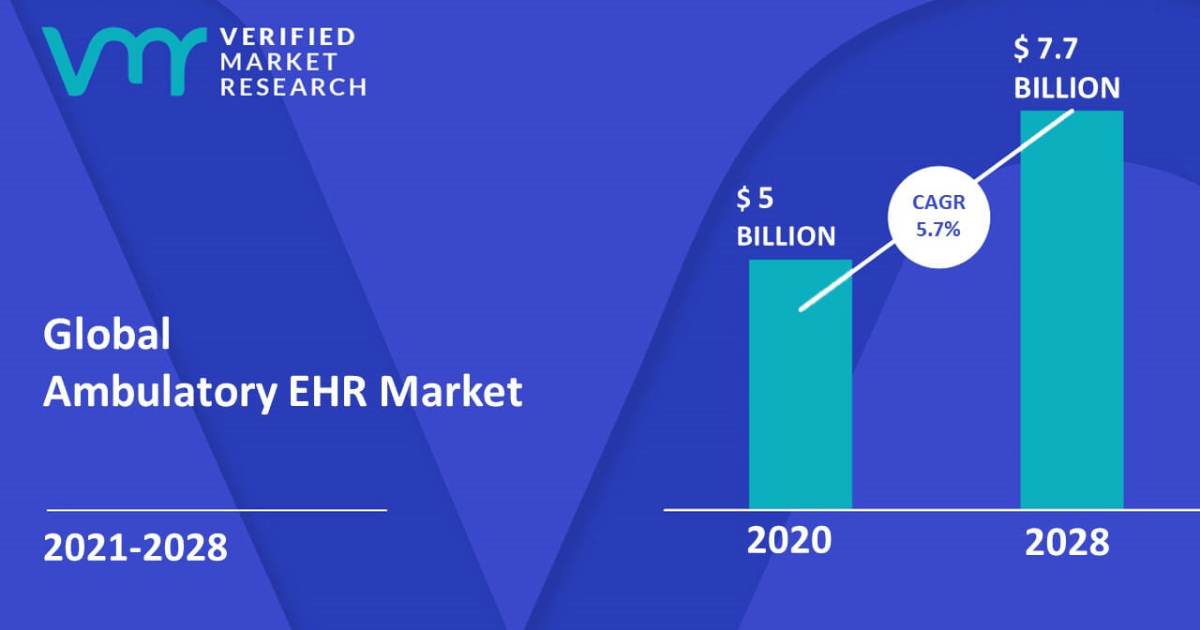Ambulatory Medical Billing Systems Market Size 2022 And Analysis By 2029
The Global Ambulatory Medical Billing Systems Industry Report is an impartial and in-depth examination of the present condition, focusing on main drivers, Ambulatory Medical Billing Systems market strategies, and the rise of critical players in the market.

Furthermore, the Ambulatory Medical Billing Systems research includes:
- Key market achievements.
- Ambulatory Medical Billing Systems research and development.
- Ambulatory Medical Billing Systems new product launch.
- Ambulatory Medical Billing Systems product responses.
- Mobile Medical Billing Systems industry regional growth of the leading competitors operating globally and locally.
Due to the pandemic, they’ve included a unique section on the pre-and post-impact of COVID 19 on the @ market, which would cover How COVID-19 Affects Ambulatory Medical Billing Systems.
Get a free sample of the Ambulatory Medical Billing Systems report at jcmarketresearch.com/report-details/1419187/sample.
(Thousands of Units) and Revenue of Global Ambulatory Medical Billing Systems (Million USD) The following coverage divides the market: – Market segment by product type, which can be divided into – Cloud-based – On-premise Market segment by application, which can be divided into – Hospitals – Clinics, and so on.
With historical and forecast market share and compounded yearly growth rate, the research Ambulatory Medical Billing Systems study is separated by application such as Laboratory, Ambulatory Medical Billing Systems Industrial Use, Ambulatory Medical Billing Systems Public Services & Others.
Furthermore, the export and import policies for Ambulatory Medical Billing Systems might immediately influence the Ambulatory Medical Billing Systems. This Ambulatory Medical Billing Systems report includes a chapter on the Ambulatory Medical Billing Systems market and company profiles for all of the firms involved. It provides valuable information on their perspectives on Ambulatory Medical Billing Systems industry finances, product portfolios, Ambulatory Medical Billing Systems investment plans, Ambulatory Medical Billing Systems marketing, and Ambulatory Medical Billing Systems company strategies. Every market enthusiast, policymaker, investor, and the player should read the Ambulatory Medical Billing Systems research.
Whether new or old, such as hospitals, clinics, and other medical facilities, any healthcare facility must have a system in place to handle and store patient data, manage appointment calendars, medical billing, revenue cycle management, and other functions. The medical practice management software industry can readily execute these functions. Medical practice management software is a type of healthcare software that manages day-to-day activities in healthcare facilities. On a single platform, it provides for patient demographics, appointment scheduling, insurance payer lists, medical billing, and report generating.
Medical practice management software may readily be linked to electronic medical records, allowing for better healthcare delivery.
The medical practice management software industry is also predicted to develop, thanks to the advent of big data and predictive analysis. In addition, strategic collaboration among key players is projected to broaden the geographical reach of the medical practice management software market, favoring it. FOR EXAMPLE, DAS HEALTH VENTURES, INC. purchased Altex Business Solutions, a Houston-based digital health startup, in February 2019 to broaden its product line and geographic reach.
The expansion in the number of hospitals and clinics and the growing need to integrate the healthcare system with strong government support are driving the growth of the medical practice management software industry. Furthermore, the medical practice management software market benefits from technical advancements in web-based and cloud-based technology and greater storage capacity.
However, a lack of training for optimal use and concerns about patient data privacy are two main challenges limiting the worldwide growth of the medical practice management software market.
Ambulatory Electronic Health Records on a Global Scale The market research study includes a detailed analysis of the market structure and forecasts for the major sectors and sub-segments. The SWOT analysis and Porter’s Five Forces analysis are the two tools that have been routinely and successfully employed to create this report. As a result, it delivers valuable and actionable market intelligence for developing long-term and lucrative business plans.
The report is an excellent source of inspiration for new business endeavors and improvement. The Ambulatory Electronic Health Records business report examines all market parts to produce the best and most comprehensive market research analysis possible.
From 2022 to 2029, the global ambulatory electronic health records market is estimated to increase at a CAGR of 6.37 percent.
According to a market research report, ambulatory electronic health records are meant for outpatient care facilities and smaller practices. This facilitates health providers’ access to the patient’s medical history, maintained in an electronic database.
The rise in government support for the adoption of healthcare information technologies, the demand for the fluid movement of healthcare information, and increased awareness of healthcare solutions are some of the key factors driving the growth of the Global Ambulatory Electronic Health Records Market.
Market Segmentation for Ambulatory Electronic Health Records:
As previously said, the ambulatory electronic health records market is divided into cloud-based and on-premise solutions based on Delivery Mode. In addition, the mobile electronic health records market is divided into practice management, patient management, e-prescribing, referral management, population health management, decision support, and health analytics, depending on the application.
According to Practice Size, the ambulatory electronic health records market is divided into primary, small-to-medium-sized, and solo practices.
Furthermore, depending on End-User, the mobile electronic health records market is divided into hospital-owned ambulatory and independent centers. The ambulatory electronic health records market is divided into reporting, planning, billing, analysis, remote medicine engagement, and medical aid based on function.
Due to the rising demand for the fluid mobility of healthcare information and increased awareness of healthcare solutions in this area, APAC dominates the ambulatory electronic health records market.
Ambulatory EHR (Electronic Health Card) systems make it easier for doctors to manage their patients’ medical records and provide long-term treatment.
They assist physicians in gathering information about patients, giving complete documentation, and having extensive and specialized knowledge of their medical data, resulting in better, more coordinated patient care. An EHR contains information such as laboratory test results, allergies, medication, medical history, etc. The ambulatory EHR industry is directly aided by the rising need for better management solutions for patients’ health records. Physicians can communicate patient information through various network-connected technologies thanks to EHR.
As a result, authorized individuals will have easier access to the patient’s record, allowing for better decision-making. In addition, reduced billing time, simple billing execution, automated data entry, and user-friendly software models are advantages of ambulatory EHR systems.
Furthermore, governments worldwide are encouraging the use of (Healthcare Information Technologies), which will help the ambulatory EHR market grow. The main impediment to the growth of the mobile EHR industry is the patient’s fear of his privacy being violated by the connected services.
However, due to strict government controls, the impact of this restriction is likely to be minimal over the predicted period. Practice size, delivery mode, application, and geography can all be used to segment the ambulatory EHR market. As a result, the market can be divided into three categories based on the size of the practice: small, medium, and large.
The market can be divided into on-premise and cloud-based distribution modes. Furthermore, the ambulatory EHR market can be divided into e-prescribing, patient management, referral management, practice management, population health management, and other applications, depending on the application. Furthermore, the market can be divided into two types of end-users: independent centers and hospital-owned facilities.
Finally, the demand for ambulatory EHRs can be divided into North America, Europe, Asia Pacific, the Middle East and Africa, and South America. Due to significant digital healthcare investment, particularly in China, Japan, and Australia, the Asia Pacific market is expected to be the most lucrative.
GE Healthcare, McKesson Corporation, eClinicalWorks, NextGen Healthcare Information Systems, LLC, Allscripts Healthcare Solutions, Inc., Cerner Corporation, athenahealth, Inc., Practice Fusion, Inc., Epic Systems Corporation, Amazing Charts, LLC, eMDs, Inc., and Greenway Health, LLC, are among the major players in the ambulatory EHR market. In addition, prominent businesses are working on mergers and acquisitions, cost-effective and efficient products, collaborative alliances, and other tactics.

